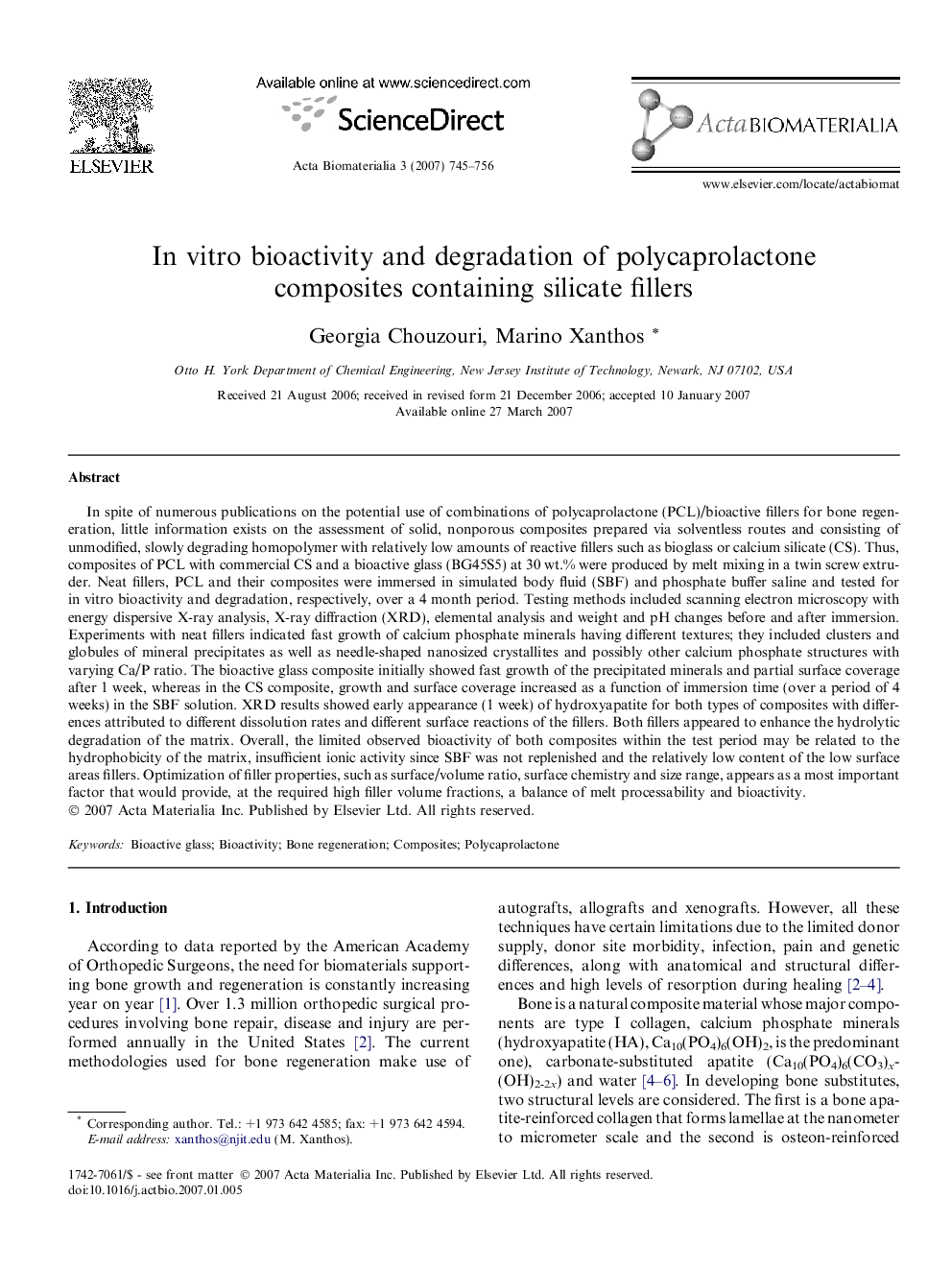| کد مقاله | کد نشریه | سال انتشار | مقاله انگلیسی | نسخه تمام متن |
|---|---|---|---|---|
| 2207 | 103 | 2007 | 12 صفحه PDF | دانلود رایگان |

In spite of numerous publications on the potential use of combinations of polycaprolactone (PCL)/bioactive fillers for bone regeneration, little information exists on the assessment of solid, nonporous composites prepared via solventless routes and consisting of unmodified, slowly degrading homopolymer with relatively low amounts of reactive fillers such as bioglass or calcium silicate (CS). Thus, composites of PCL with commercial CS and a bioactive glass (BG45S5) at 30 wt.% were produced by melt mixing in a twin screw extruder. Neat fillers, PCL and their composites were immersed in simulated body fluid (SBF) and phosphate buffer saline and tested for in vitro bioactivity and degradation, respectively, over a 4 month period. Testing methods included scanning electron microscopy with energy dispersive X-ray analysis, X-ray diffraction (XRD), elemental analysis and weight and pH changes before and after immersion. Experiments with neat fillers indicated fast growth of calcium phosphate minerals having different textures; they included clusters and globules of mineral precipitates as well as needle-shaped nanosized crystallites and possibly other calcium phosphate structures with varying Ca/P ratio. The bioactive glass composite initially showed fast growth of the precipitated minerals and partial surface coverage after 1 week, whereas in the CS composite, growth and surface coverage increased as a function of immersion time (over a period of 4 weeks) in the SBF solution. XRD results showed early appearance (1 week) of hydroxyapatite for both types of composites with differences attributed to different dissolution rates and different surface reactions of the fillers. Both fillers appeared to enhance the hydrolytic degradation of the matrix. Overall, the limited observed bioactivity of both composites within the test period may be related to the hydrophobicity of the matrix, insufficient ionic activity since SBF was not replenished and the relatively low content of the low surface areas fillers. Optimization of filler properties, such as surface/volume ratio, surface chemistry and size range, appears as a most important factor that would provide, at the required high filler volume fractions, a balance of melt processability and bioactivity.
Journal: Acta Biomaterialia - Volume 3, Issue 5, September 2007, Pages 745–756